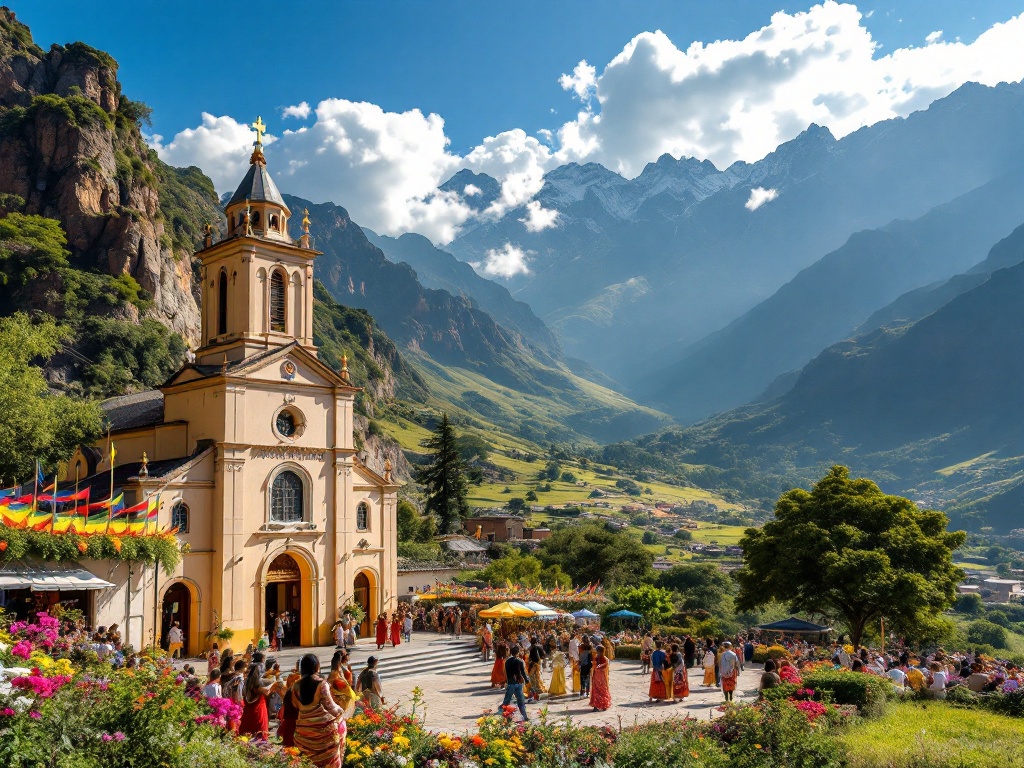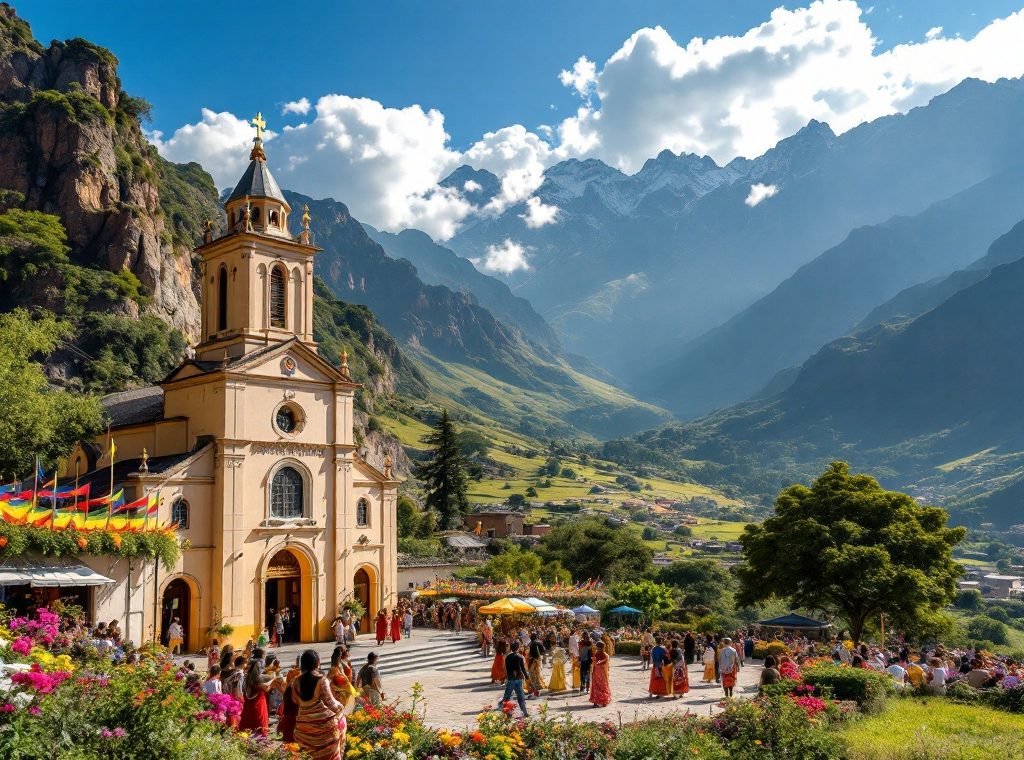Best Time to Visit Ethiopia for Tourists
Discover the magic of Ethiopia! Experience ideal weather and vibrant festivals from October to March. Explore ancient wonders, trek through stunning landscapes, and witness unique celebrations like Timkat and Meskel. Plan your unforgettable Ethiopian adventure today and unlock the beauty of this captivating country. Read on to find the perfect time for your journey!
Important information

- The best time to visit Ethiopia is during the dry season, from October to March, for ideal weather and outdoor activities.
- The rainy season, from June to September, can hinder travel due to heavy downpours, especially in July and August. However, it offers lush scenery and fewer crowds.
- Key festivals include Ethiopian Christmas (Ganna) on January 7th, Timkat (Epiphany) on January 8th, and Meskel (celebrating the discovery of the True Cross) in September/October.
- Ethiopia has diverse landscapes and climates. Higher elevations are cooler, while lowlands are warmer. Pack layers to adapt to changing temperatures.
- For a less crowded experience, consider visiting during the shoulder season (February to April), which offers pleasant weather and is ideal for trekking.
Best Time to Visit Ethiopia for Tourists
Discover Ethiopia’s splendor during its dry season, from October to March, when mild weather and minimal rainfall create ideal conditions for exploration. Immerse yourself in the country’s captivating history and diverse landscapes. Don’t forget that an eVisa Ethiopia is required for most nationalities entering the country. You can apply for it online at eVisa Ethiopia.
Experience the peak of Ethiopia’s beauty in October and November, as lush greenery flourishes after the rainy season. Witness the vibrant transformation of the landscape and capture breathtaking scenery.
Embrace Ethiopia’s rich culture by partaking in unique events during the dry season. Celebrate Ethiopian Christmas on January 7th and witness the vibrant festivities of Timkat.
Plan your Ethiopian adventure between October and March to fully experience the country’s beauty and cultural richness. This period offers the most favorable climate and the opportunity to witness unique celebrations.
Optimal Travel Months: October to March
Ethiopia’s dry season, from October to March, offers ideal weather for outdoor adventures. This vibrant period also boasts numerous festivals and cultural events.
Ethiopia’s Climate Guide
Ethiopia’s diverse landscapes, from the cool highlands of Addis Ababa to the hot, dry lowlands, create a varied climate. The country experiences two main seasons: dry and rainy. The dry season, from October to May, offers mild temperatures, ideal for exploration. The rainy season, from June to September, brings heavy downpours, particularly in July and August, which can affect travel. However, the rain transforms Ethiopia into a vibrant green paradise. This post-rain lushness offers a unique beauty, contrasting with the dry season’s attractions. Ethiopia presents a stunning spectacle in every season.
Weather Patterns and Climate Across Ethiopia
Ethiopia’s diverse topography results in a variety of climates. Higher elevations experience cooler temperatures, while the lowlands are much warmer. The main rainy season, from June to September, brings heavy rainfall to the highlands. The dry, cool months from October to March offer ideal travel conditions with comfortable temperatures and minimal rainfall.
Understanding the Dry and Rainy Seasons
Ethiopia has two main seasons: dry and wet. The dry season, from October to May, offers ideal conditions for outdoor pursuits. Conversely, June to September marks the wet season, characterized by heavy rainfall that can disrupt travel, especially in July and August. These downpours can sometimes cause road closures, limiting access to certain regions.
Impact of Rainfall on Travel Plans
Ethiopia’s rainy season, spanning from May to September, presents unique travel considerations. While the heavy downpours transform the landscape into a vibrant spectacle and often offer a more secluded experience, they also pose certain challenges. Roads may become impassable, limiting access to some regions and making trekking more difficult due to slippery and muddy trails. Wildlife viewing can also be more challenging as animals disperse to find food. Therefore, factor these conditions into your travel plans if you are considering visiting Ethiopia during this period.
Mild Temperatures in Highland Regions
Ethiopia’s high-elevation highlands boast mild, pleasant weather, making them a comfortable and attractive destination for visitors.
Verdant Landscapes After Rainy Season
Following Ethiopia’s rainy season, typically between October and March, the landscape transforms into a vibrant green spectacle, attracting visitors from across the globe.
Travel Seasons in Ethiopia
The prime time to visit is from October to January, offering ideal weather for outdoor enthusiasts.
For a balance of pleasant conditions and fewer tourists, consider the shoulder season, February to April – perfect for a peaceful hike.
The low season, May through September, brings heavy rainfall, potentially disrupting travel plans, so prepare accordingly.
High Season: October to January
Plan your unforgettable Ethiopian adventure during the dry season, from October to January. This is the ideal time to explore the country’s ancient historical sites and stunning national parks. Because this is peak tourist season, book your accommodations and tours in advance. Don’t miss the vibrant festivals of Timkat and Meskel for a truly immersive experience.
Shoulder Season: February to April
The ideal time for trekking is between February and April, when the weather is pleasant and the crowds are smaller, making wildlife viewing easier.
The landscapes are lush and vibrant, rejuvenated by the rainy season.
This period offers a more intimate experience, allowing for tranquil exploration of historical sites and cultural attractions.
It’s a wonderful time to visit.
Low Season: May to September
Ethiopia’s low season runs from May to September, coinciding with the rainy season, which peaks in July and August. While travel can be challenging due to muddy roads and limited access, budget travelers might find this period appealing. The lush, vibrant landscape, combined with fewer crowds and lower prices, offers a unique experience.
Ethiopia Month by Month Breakdown
January to March: Ideal Weather and Cultural Experiences
Ethiopia welcomes tourists with ideal weather perfect for exploring historical sites like Lalibela and trekking the Simien Mountains. This period also offers vibrant cultural festivals like Ganna (Ethiopian Christmas) and Timkat.
April to June: Transition and Birdwatching
April offers pleasant weather ideal for birdwatching. However, May and June mark the beginning of the rainy season, which may impact travel plans.
July to September: Heavy Rainfall
This period experiences heavy rainfall, especially in the north, making travel difficult and outdoor activities less appealing.
October to December: Lush Landscapes and Trekking
Ethiopia’s scenic beauty flourishes with lush landscapes after the rains. This time provides ideal trekking conditions and the opportunity to experience vibrant festivals like Meskel, celebrated in September or October.
January to March: Peak Tourist Season
Ethiopia shines from January to March, boasting ideal weather and vibrant cultural events like Ganna (Christmas) and Timkat (Epiphany). This peak season draws more tourists and higher prices, so booking accommodations and tours in advance is essential.
April to June: Transitional Period
Ethiopia’s dry season transitions to a wet season between April and June. This shift brings increased rainfall that can impact travel, especially in lower-lying areas. Higher elevations often remain comfortable during this period. Consider this when planning your trip.
July to September: Rainy Season Challenges
Traveling between June and September can be challenging due to heavy rainfall. Roads often become muddy, limiting access to certain areas and making wildlife viewing and outdoor activities difficult. However, the rainy season also offers advantages such as smaller crowds and lower prices, presenting a worthwhile trade-off for potential visitors.
October to December: Scenic Beauty and Festivals
Ethiopia truly shines from October to December. The rainy season ends, revealing breathtaking landscapes under clear skies. This is the perfect time to visit, coinciding with numerous Ethiopian festivals that offer rich cultural immersion.
The pleasant weather is ideal for outdoor activities. Explore diverse national parks and discover historic sites. It’s a remarkable season to experience the wonders of Ethiopia.
Festivals and Events in Ethiopia
Ethiopians celebrate Christmas (Ganna) on January 7th. Another significant holiday is Timkat, commemorating Jesus’s baptism in the Jordan River. In late September, they observe Meskel, which marks the discovery of the True Cross. Irreecha, a thanksgiving festival, takes place in Bishoftu, near Addis Ababa.
Ethiopian Christmas and Timkat Celebrations
Ethiopia celebrates Christmas (Ganna) on January 7th. The following day, Timkat, commemorating Jesus’ baptism, unfolds with vibrant processions and unique religious ceremonies. Tourists can experience traditional music and cultural rituals, gaining insight into Ethiopia’s rich heritage during these extraordinary events.
Meskel Festival in Addis Ababa
Every September, Addis Ababa comes alive with the vibrant festivities of Meskel, a celebration commemorating the discovery of the True Cross. A massive bonfire blazes, accompanied by colorful processions that weave through the city streets. This captivating spectacle offers a unique glimpse into Ethiopia’s rich culture and deep-rooted traditions.
Irreecha Festivities Near Addis Ababa
Irreecha, a vibrant Oromo thanksgiving festival, marks the end of the rainy season and the beginning of the harvest. Held in Bishoftu, near Addis Ababa, this joyous celebration overflows with music, dance, and rich cultural displays. The Oromo people gather to express gratitude for the past season and welcome the promise of the new one. Irreecha also serves as a powerful affirmation of Oromo culture and identity, upholding a time-honored tradition.
Travel Tips and Recommendations
Immerse yourself in Ethiopian culture by visiting bustling markets and respectfully engaging with local communities. This provides a deeper understanding of Ethiopian traditions.Pack clothing in layers due to Ethiopia’s varied weather. Temperatures fluctuate across regions and altitudes, so research regional climates before your trip. Pack for both sunshine and rain.Travel insurance is recommended. Discuss necessary vaccinations with your doctor for personalized health recommendations to ensure a safe and healthy trip. Remember to apply for your eVisa Ethiopia in advance through this link: eVisa Ethiopia. This will ensure a smooth entry process upon arrival.
Maximizing Cultural Experiences and Sightseeing
Explore Ethiopia’s vibrant culture through a traditional coffee ceremony and visits to bustling local markets. Savor the unique flavors of Ethiopian cuisine for an authentic taste of daily life. Uncover Ethiopia’s rich history at the rock-hewn churches of Lalibela, the obelisks of Axum, and the castles of Gondar. These remarkable sites reveal centuries of captivating stories. For a more personalized experience, consider hiring a local guide to gain deeper insights into the culture and history.
Cultural Immersion
- Experience a traditional Ethiopian coffee ceremony.
- Explore bustling local markets.
- Savor the unique flavors of Ethiopian cuisine.
Historical Exploration
- Discover the rock-hewn churches of Lalibela.
- Explore the obelisks of Axum.
- Visit the castles of Gondar.
Enhance your journey by hiring a local guide for personalized insights into Ethiopian culture and history.
Preparing for Diverse Weather Conditions
Pack clothing suitable for layering to accommodate varying temperatures between seasons. The dry season, from October to May, is characterized by pleasant days and cooler nights, particularly in the highlands. For the rainy season, from June to September, pack rain gear and waterproof bags in anticipation of frequent downpours, especially heavy in July and August. Be aware that this rainfall can affect travel, potentially resulting in muddy roads and restricted access to some areas.















